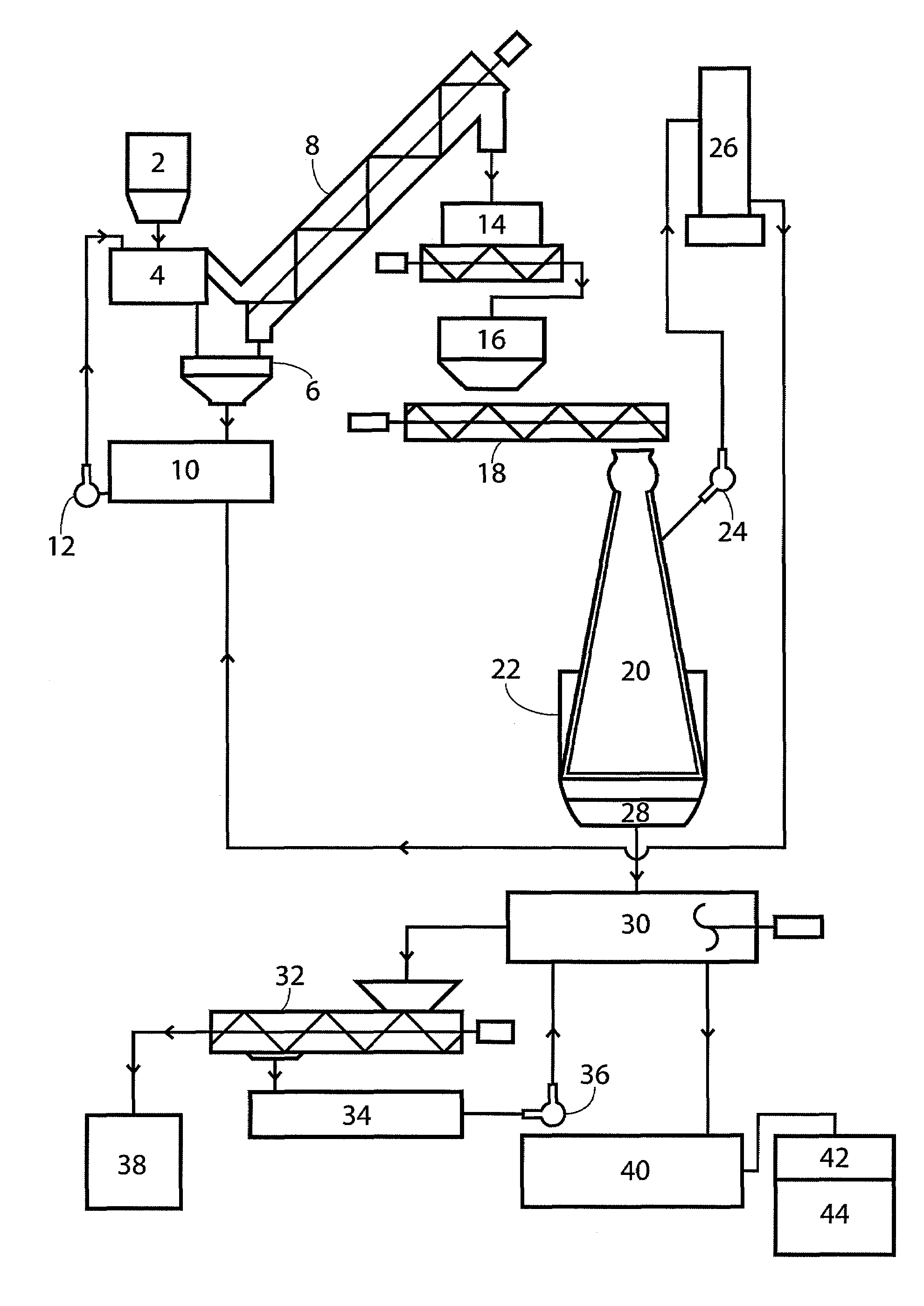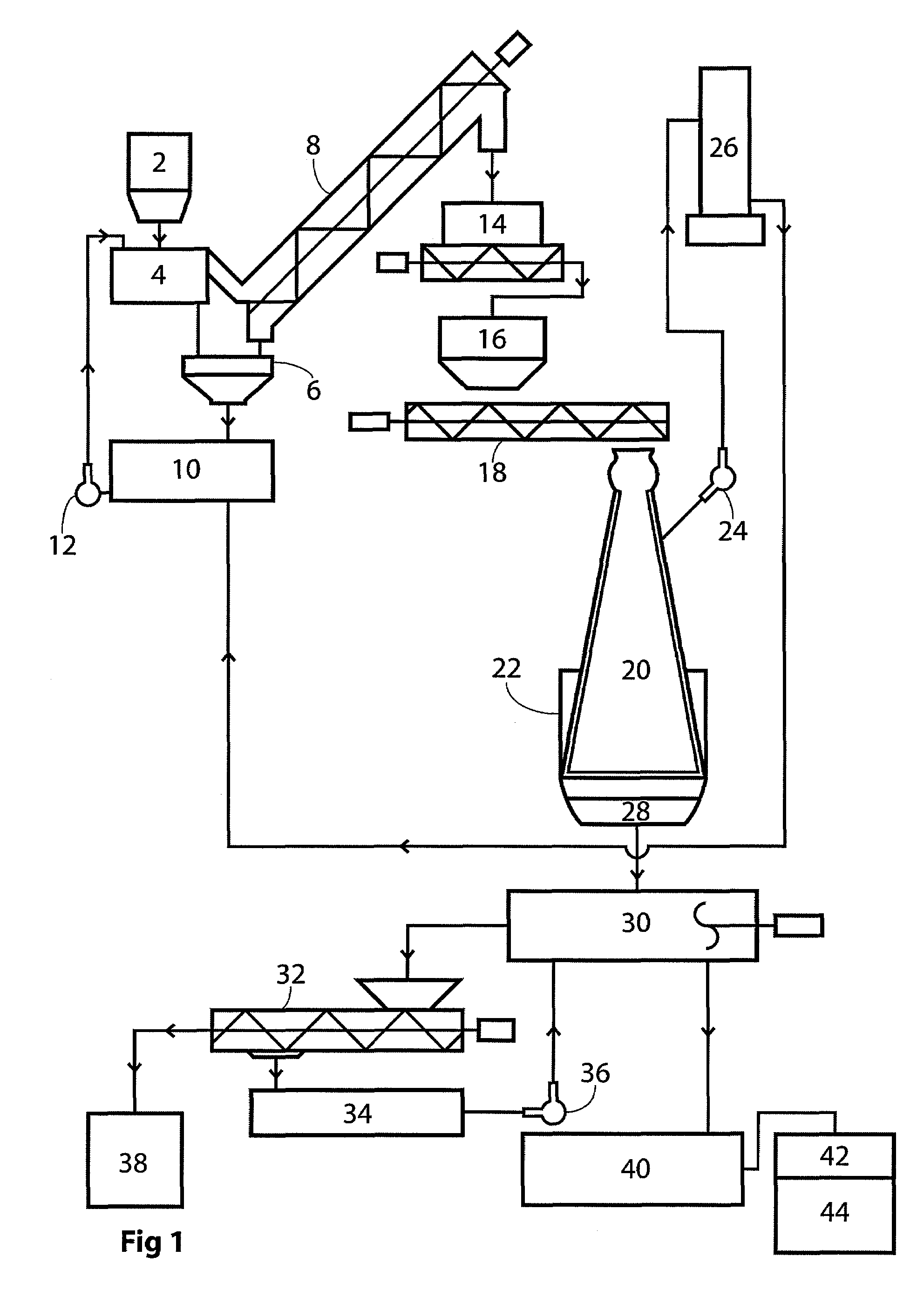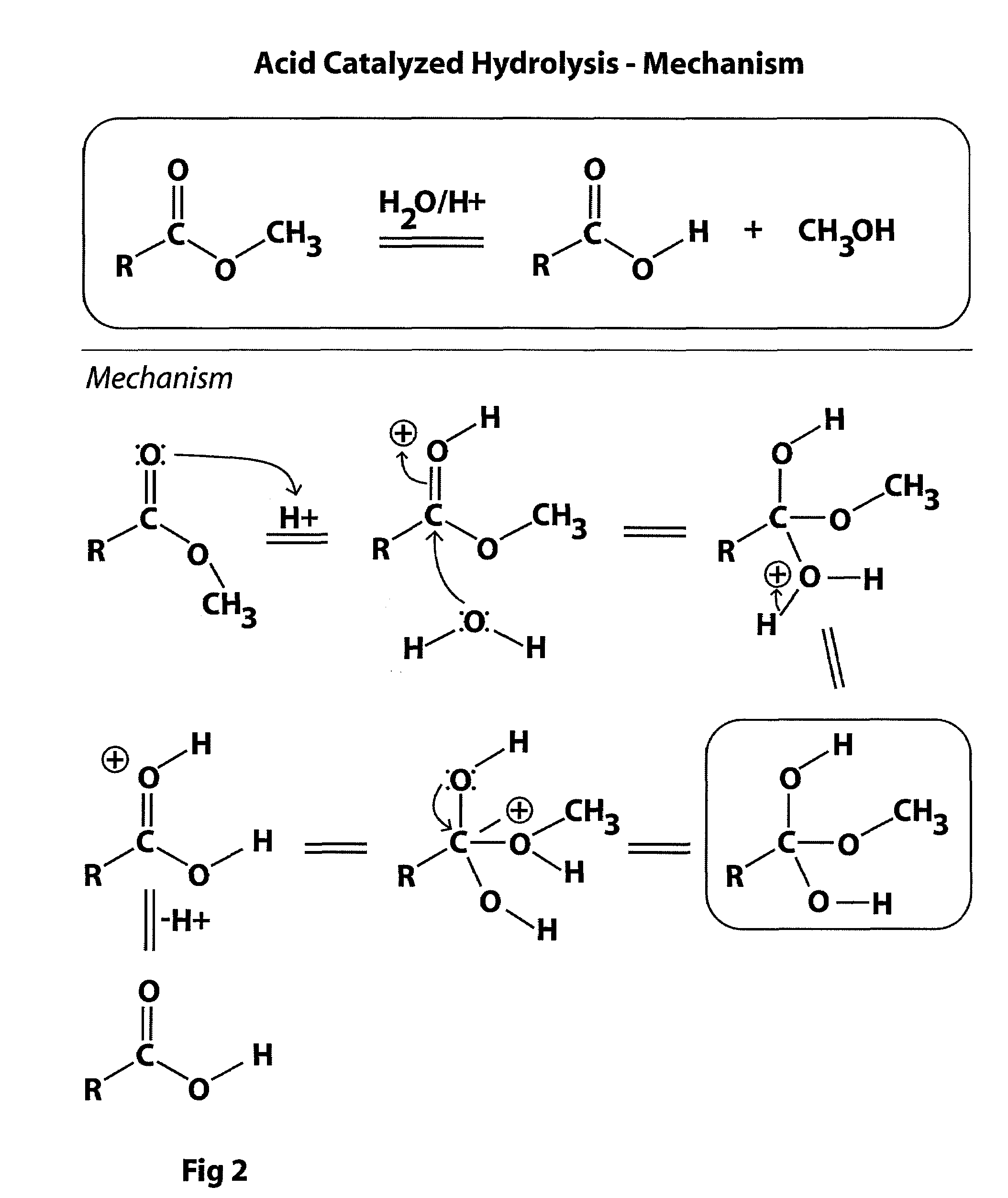Catalytic reactor process for the production of commercial grade pulp, native lignin and unicellular protein
a catalytic reactor and native lignin technology, applied in the field of lignocellulosic material processing, can solve the problems of increasing the maintenance cost of the facility, high operating cost, and high equipment and maintenance costs of the processing facility, and achieves flexibility in pulp production, tremendous profit potential, and low temperature
- Summary
- Abstract
- Description
- Claims
- Application Information
AI Technical Summary
Benefits of technology
Problems solved by technology
Method used
Image
Examples
Embodiment Construction
[0045]FIG. 1 shows a schematic of the preferred embodiment of the process. Chips from infeed 2 are placed in impregnating chamber 4 along with an impregnate solution. After the chips have soaked for an appropriate amount of time, excess impregnate is removed and cleaned, such as by filter mechanism 6 and collected in recovery tank 10. It is then strengthened and returned, such as by pump 12, to impregnating chamber 4.
[0046]Meanwhile, the impregnated chips are moved by appropriate means, such as auger mechanism 8, to catalytic reactor 20. To control the feed of chips from impregnating chamber 4 to the catalytic reactor 20, various mechanisms may be used. In the preferred embodiment, holding tank 14 holds the impregnated chips until they may be fed through hopper 16 into measurement device 18. Measurement device 18 then controls the feed rate of chips into catalytic reactor 20.
[0047]In catalytic reactor 20, the chips are heated by heater 22 to a temperature above the evaporation tempe...
PUM
| Property | Measurement | Unit |
|---|---|---|
| weight percent | aaaaa | aaaaa |
| temperatures | aaaaa | aaaaa |
| pH | aaaaa | aaaaa |
Abstract
Description
Claims
Application Information
 Login to View More
Login to View More - R&D
- Intellectual Property
- Life Sciences
- Materials
- Tech Scout
- Unparalleled Data Quality
- Higher Quality Content
- 60% Fewer Hallucinations
Browse by: Latest US Patents, China's latest patents, Technical Efficacy Thesaurus, Application Domain, Technology Topic, Popular Technical Reports.
© 2025 PatSnap. All rights reserved.Legal|Privacy policy|Modern Slavery Act Transparency Statement|Sitemap|About US| Contact US: help@patsnap.com



